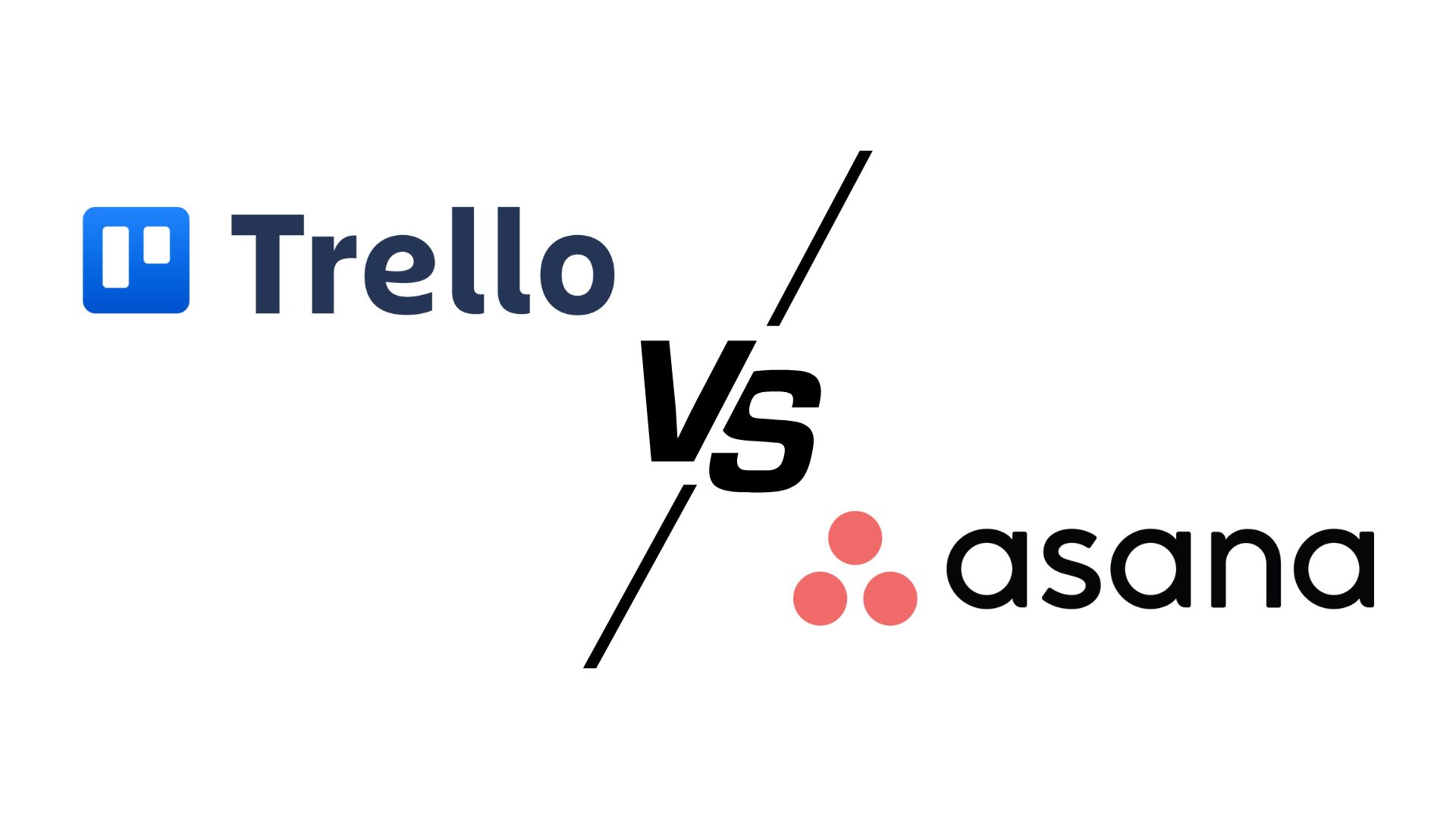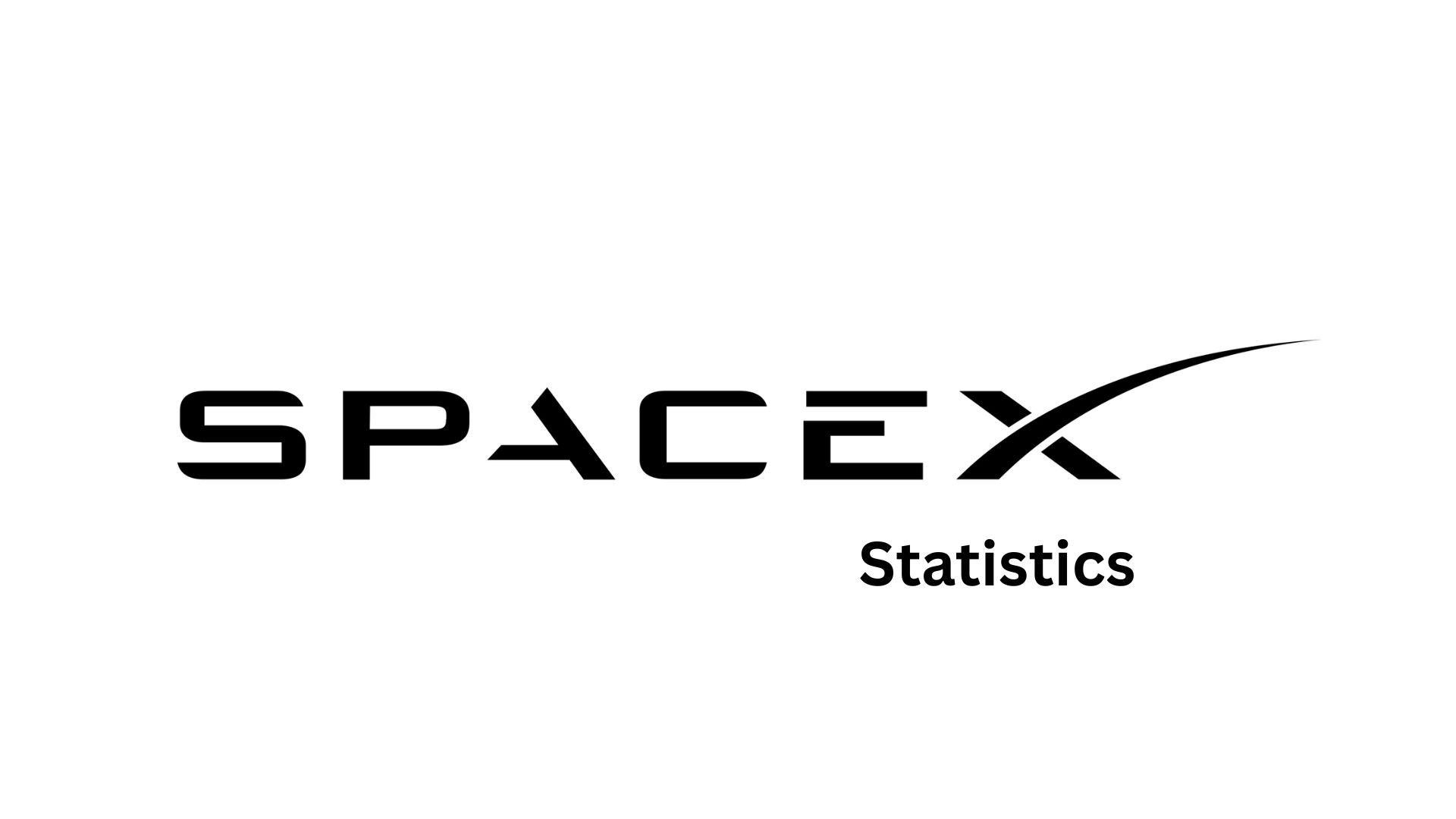Biosensors Statistics By Market Size, Revenue and Facts
Updated · Feb 24, 2025
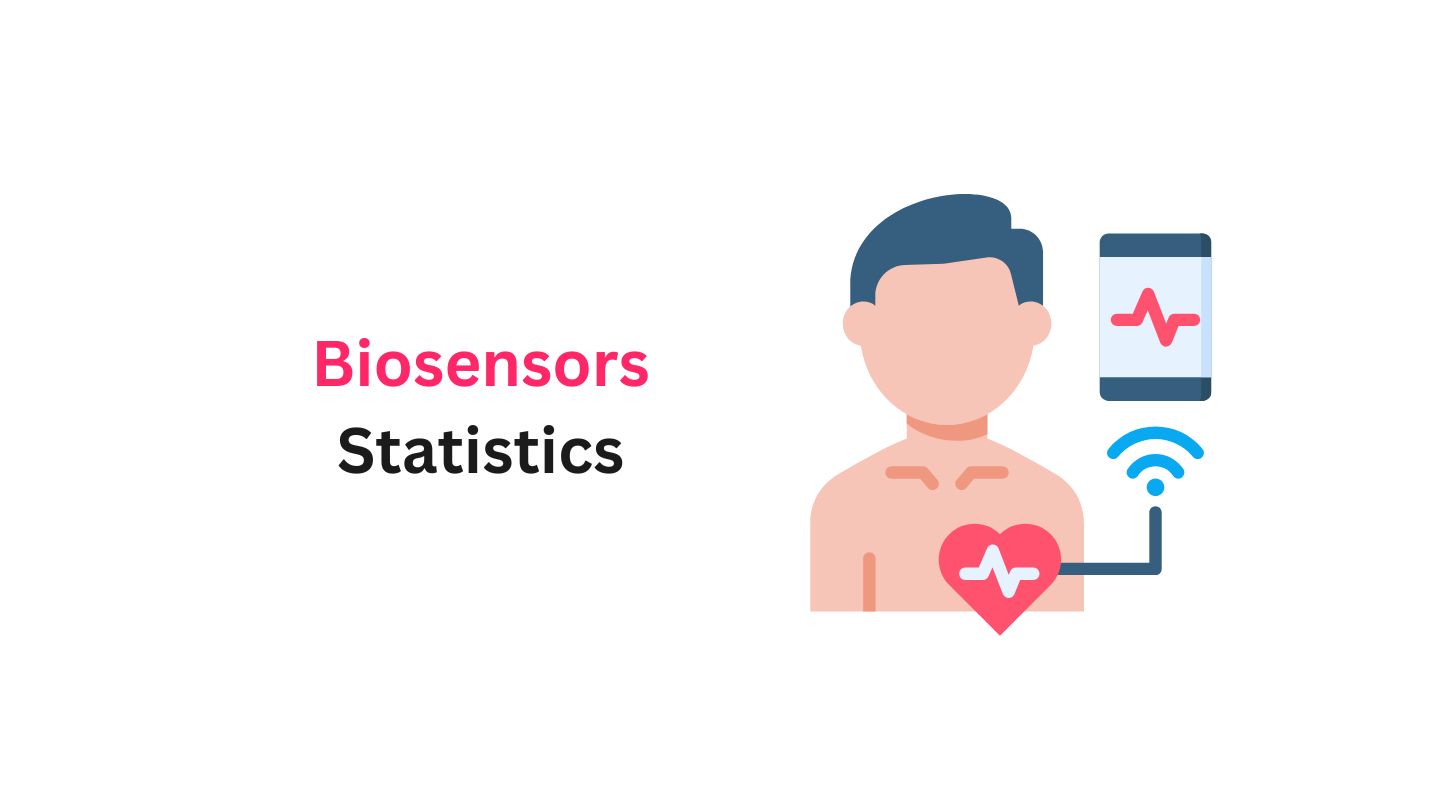
Table of Contents
- Introduction
- Editor’s Choice
- Biosensors Market Size By Market.us
- Biosensors Estimated Sales
- Biosensors Market Size By Precedence Research
- U.S Biosensors Market Size
- Biosensor Market By Region
- Biosensor Revenue Share By Technology
- Biosensor Revenue By Application
- Biosensors Sales By Regions
- Biosensor Revenue By End-use
- Conclusion
Introduction
Biosensors Statistics: Biosensors represent a biological component combined with a physicochemical detector to observe and measure chemical substances, converting biological responses into quantifiable signals. They see applications in various sectors, namely health care, environmental monitoring, agriculture, and food safety.
The biosensors market grew sufficiently well in 2025 on account of technological advancements, point-of-care testing’s increasing demand, and the rampant prevalence of chronic diseases.
This article discusses the biosensor statistics in detail, emphasising some of the key figures, growth rates, and financial metrics.
Editor’s Choice
- According to Market.us, the global biosensors market is projected to grow at a CAGR of 9%, reaching an estimated USD 64 billion by 2032.
- According to Precedence Research, the biosensors market size in 2024 was USD 30.70 billion and is expected to grow to USD 33.15 billion in 2025 and USD 35.80 billion in 2026.
- By 2030, the biosensors market is projected to reach USD 48.31 billion, with continued growth leading to an estimated USD 58.44 billion in 2033.
- The US biosensors market reached USD 10.11 billion in 2024 and is expected to grow to USD 15.50 billion by 2030, driven by increased adoption and technological advancements.
- North America dominated the biosensors market, reaching USD 11.25 billion in 2023, and is projected to surpass USD 18.73 billion by 2030.
- Europe ranked next, reaching USD 6.79 billion in 2023, with a growth rate of 7.7%.
- Asia Pacific was valued at USD 5.74 billion in 2023 and is projected to grow to USD 10.06 billion by 2030, driven by increased healthcare investments and rising demand for medical monitoring devices.
- The medical sector remains the largest contributor to the biosensors market, with revenue growth from USD 14.63 billion in 2020 to USD 18.68 billion in 2023.
- Point-of-care (PoC) testing and diagnostics for home healthcare experienced significant growth, with revenue increasing from USD 10.44 billion in 2020 to USD 13.37 billion in 2023.
Biosensors Market Size By Market.us
- The global biosensors market is expected to reach USD 63 billion by 2032, growing from USD 27.2 billion in 2022 at a CAGR of 9%.
- Electrochemical biosensors dominate the market by technology, holding the highest revenue share of 71.1% in 2021.
- Wearable biosensors are gaining popularity for health monitoring and are projected to grow at a CAGR of 9.3%.
- The point-of-testing segment held the largest share of the market, with 49.8% revenue in 2021.
- Biosensors are increasingly used in the medical industry, particularly in point-of-care applications for monitoring blood, saliva, urine, and sweat.
- North America leads the market, holding 41.7% of the revenue share in 2022, due to the presence of major industry players and a high prevalence of targeted diseases.
- Europe accounted for 23% of the market share in 2022.
- The market is expanding due to the increasing number of industry players and the rising adoption of biosensors.
Biosensors Estimated Sales

(Reference: statista.com)
- This market, therefore, is fast emerging as the one that is going to grow in the biosensors segment. In the period from 2017 to 2027, it is expected to witness a massive surge.
- The major driving factor is the increased demand for biosensors in healthcare, agriculture, and environmental monitoring.
- Biosensors statistics anticipated that the biosensors market will grow at a compound annual growth rate (CAGR) of around 9.4%. This means there will be an annual upsurge of around 9.4% in the market value as compared to the previous year.
- Therefore, Global value sales of biosensors are poised to cross nearly USD 1.4 billion by 2027.
- The increased value shows the level of growing adoption of biosensors in the different segments, particularly point-of-care testing, wearable health monitors, and industries, where the amount is swelled by adding more applications.
- The other contributor to expansion is continuous improvement in the technology of biosensors, like miniaturisation and increased sensitivity.
Biosensors Market Size By Precedence Research
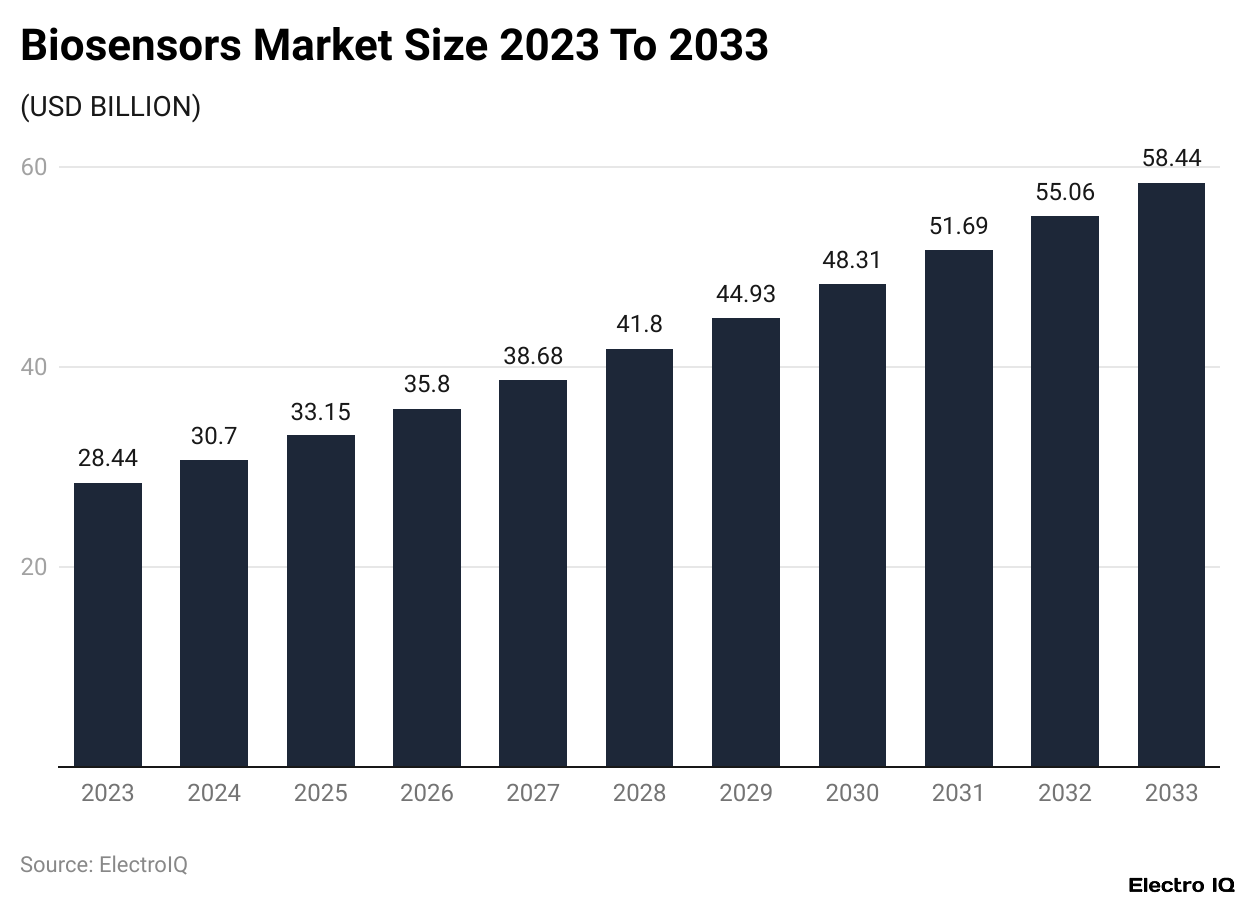
(Reference: precedenceresearch.com)
- The biosensors market has been flourishing almost every year for much of its existence, increased or consistently increased value areas.
- Biosensors statistics state that in 2023, the market was valued at approximately USD 28.44 billion, and in 2024, an increment was realised totalling USD 30.70 billion.
- This upward trend is expected into the future years, hitting a market size of USD 33.15 billion in 2025 and USD 35.80 billion in 2026.
- The slow pace of growth is not visible, as the projections for the year 2027 estimate a market value of about USD 38.68 billion, followed by USD 41.80 billion in 2028 and USD 44.93 billion in 2029.
- Growth is being driven by increased applications and demand for biosensors, including medical diagnostics, food safety, environmental monitoring, and industrial processes.
- By 2030, the market is expected to be valued at USD 48.31 billion and continue its rise to USD 51.69 billion in 2031 and USD 55.06 billion in 2032.
- Projected for 2033, the biosensors market would be worth an impressive USD 58.44 billion.
- The continuous development indicates the increased need for biosensors in modern technology and also shows their increasing importance in healthcare and other fields.
U.S Biosensors Market Size
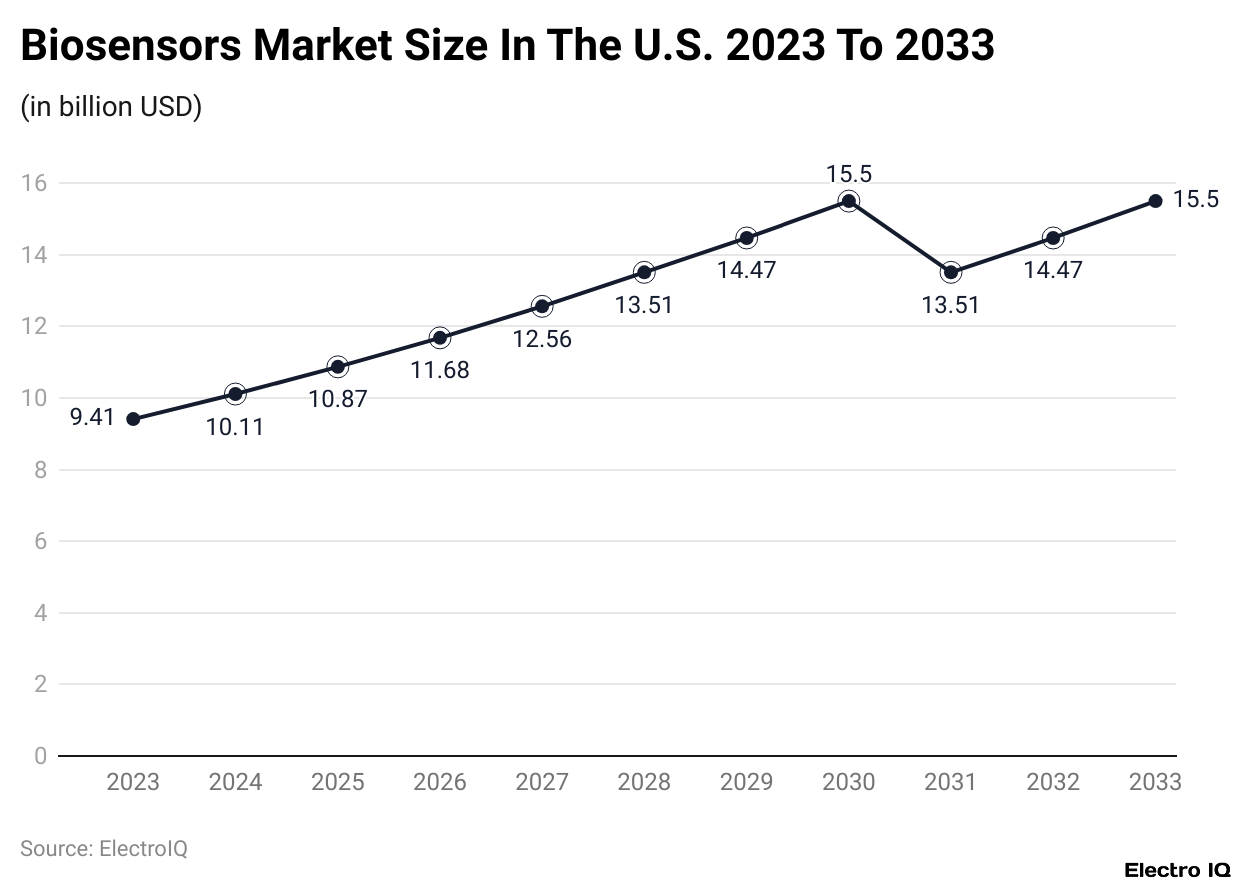
(Reference: precedenceresearch.com)
- Biosensors statistics show that over the years, there has been experienced steady growth in the U.S. biosensors market, with a consistent increase in market size and a value of USD 9.41 billion in 2023, which increased to USD 10.11 billion in 2024.
- This favourable trend is expected to continue for the next years, with the market reaching USD 10.87 billion in 2025 and USD 11.68 billion in 2026.
- With further advancement in biosensor technology and increasing demand from various industrial sectors, an expanded market size is envisaged in the aforementioned years, estimated at USD 12.56 billion by 2027, USD 13.51 billion by 2028, and USD 14.47 billion by 2029.
- The most encouraging sign is the significant increase in adoption and innovation in biosensor applications, leading to an expected increase in market value to USD 15.50 billion in the year 2030.
- The forecast assesses a continuing boom in the market, with USD 13.51 billion expected in 2031, USD 14.47 billion in 2032, and USD 15.50 billion in 2033.
- The value growth illustrates an increasing focus on biosensors in healthcare, diagnostics, environmental monitoring, etc.
- The gradual ascent of the market value is a strong indicator of a positive biosensor technology that will flourish with technological progress and rising demand.
Biosensor Market By Region
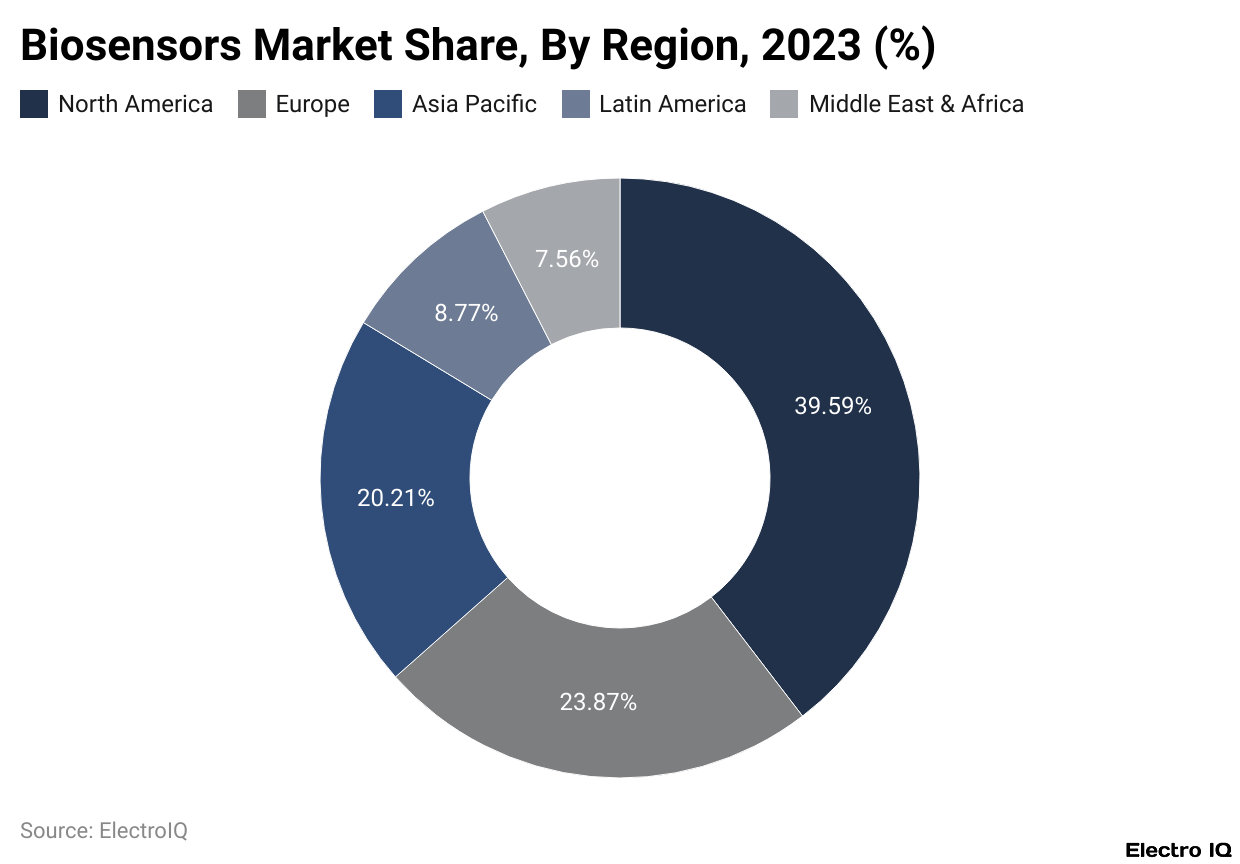
(Reference: precedenceresearch.com)
- Biosensors are expected to be growing the fastest in Europe within the framework of the forecast period.
- The UK holds the leading position in the European biosensors market.
- The increasing incidence of diseases such as diabetes is a major factor in the growth of this region.
- In 2018, the International Diabetes Federation reported that 32.7 million people in Europe had diabetes, thereby generating demand for biosensors in the management of such chronic conditions.
- In addition, since elderly populations are expected to need healthcare monitoring and management, this has also increased the demand for biosensors in Europe.
- According to biosensor statistics, the North American biosensor market was valued at approx. USD 11.25 billion in 2023 and is expected to witness significant growth, expected to reach over USD 18.73 billion by 2030.
- The market is primarily driven by strong healthcare infrastructure, advancement of technologies, and rising demand for point-of-care diagnostics and wearable health devices.
- The European biosensors market was valued at USD 6.79 billion in 2023 and is growing at a CAGR of 7.7%, representing a steady growth of biosensor acceptance, thereby addressing healthcare and industrial applications throughout the region.
- On the other hand, the Asia Pacific biosensors market valued at USD 5.74 billion in 2023, is anticipated to grow significantly, projected to reach an estimated USD 10.06 billion by 2030.
- Rapid growth in Asia has been fueled by increasing healthcare investments, an influx of awareness regarding preventive healthcare, and heightened demand for medical monitoring devices due to the rising population momentum in China and India.
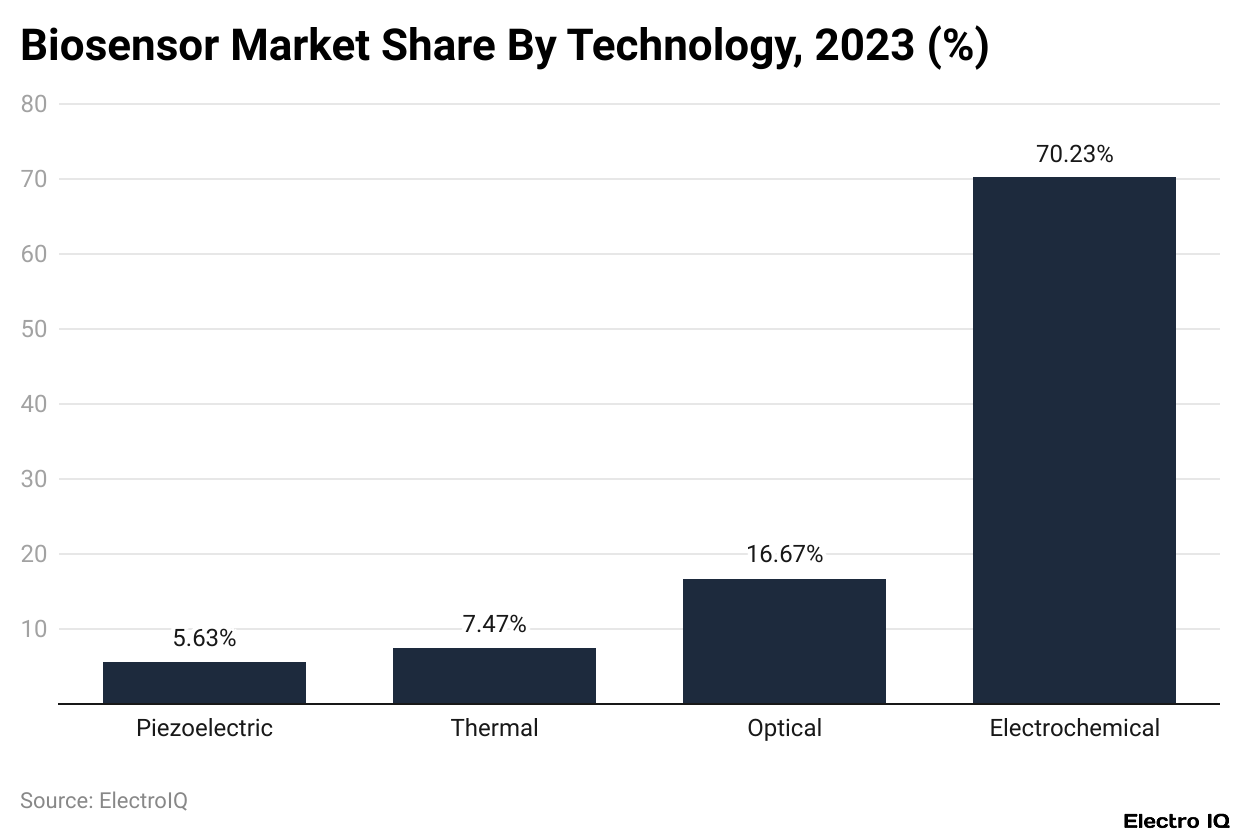
(Reference: precedenceresearch.com)
- The global biosensors market revenue is shown by technology from 2020 to 2023 in the millions of dollars.
- The revenue from thermal biosensors keeps rising year after year, which started with the amount of USD 1,662.86 million in 2020 and was prospectively standing at USD 2,123.40 million in 2023.
- The demand for these thermal sensors is unceasing, although the ages of growth in developing the revenue are much slower compared to other technologies.
- Electrochemical biosensors have been leading and holding their final highest revenues here.
- At first, in 2020, it came about as USD 15,833.55 million, then increased to USD 19,977.59 million for 2023. This demand has now grown extremely since it has a wider application in medical diagnostics, environmental monitoring, and food safety, among others.
- This technology tends to stay in the pole position in the biosensors market. Piezoelectric biosensors were not left behind in this income growth, but not as much as electrochemicals.
- They garnered USD 1,276.66 million in 2020, then grew to USD 1,601.13 million in 2023. There is, therefore, an increase in the number of piezoelectric sensors sold, but minuscule When compared with other technologies.
- Optical biosensors also do enormously well. Their revenue was USD 3,635.83 million in 2020 and soared to USD 4,742.07 million in 2023.
- Their market rise can be ascribed to enhanced demand in a wide range of applications, especially in healthcare and environmental monitoring.
Biosensor Revenue By Application
- From 2020 to 2023, the Biosensors statistics outline the global biosensors market revenue for different applications in a million U.S. dollars.
- The medical segment has always been the primary contributor to the biosensors market, with increased revenue each year.
- In 2020, the revenue for medical biosensors was USD 14,626.29 million, which grew to USD 18,677.15 million by 2023, hinting toward high demand for biosensing technologies in the healthcare domain.
- For food toxicity, the revenue, too, saw gradual growth from USD 946.00 million in 2020 to USD 1,193.59 million in 2023, which indicates the growing need for biosensors in food to detect harmful substances for consumer safety.
- Biosensors in the bioreactor sector concerning industrial bioprocesses rose from USD 1,495.39 million in 2020 to USD 1,875.45 million in 2023.
- This shows increased dependence on biosensors to monitor and control bioreactors, especially for the pharmaceutical and biotechnology industries.
- Biosensors statistics state that in agriculture, the biosensors market grew from USD 2,272.37 million in 2020 to USD 2,936.61 million by 2023, indicating the growing use of biosensors for crop health, soil condition assessment, and increase in agricultural productivity.
- The environmental application sector witnessed steady growth, with revenues increasing from USD 1,933.46 million in 2020 to USD 2,483.76 million in 2023. This signifies burgeoning biosensing usage in pollution monitoring, water, and environmental health.
- Last, the “others” category, which includes a mixture of niche applications, has sustained moderate growth with a surge from USD 1,135.39 million in 2020 to USD 1,277.64 million in 2023.
- Though the category comprises less-than-mainstream applications of biosensors, with the steady increase, it hints at limited ruthless innovation across industries.
Biosensors Sales By Regions
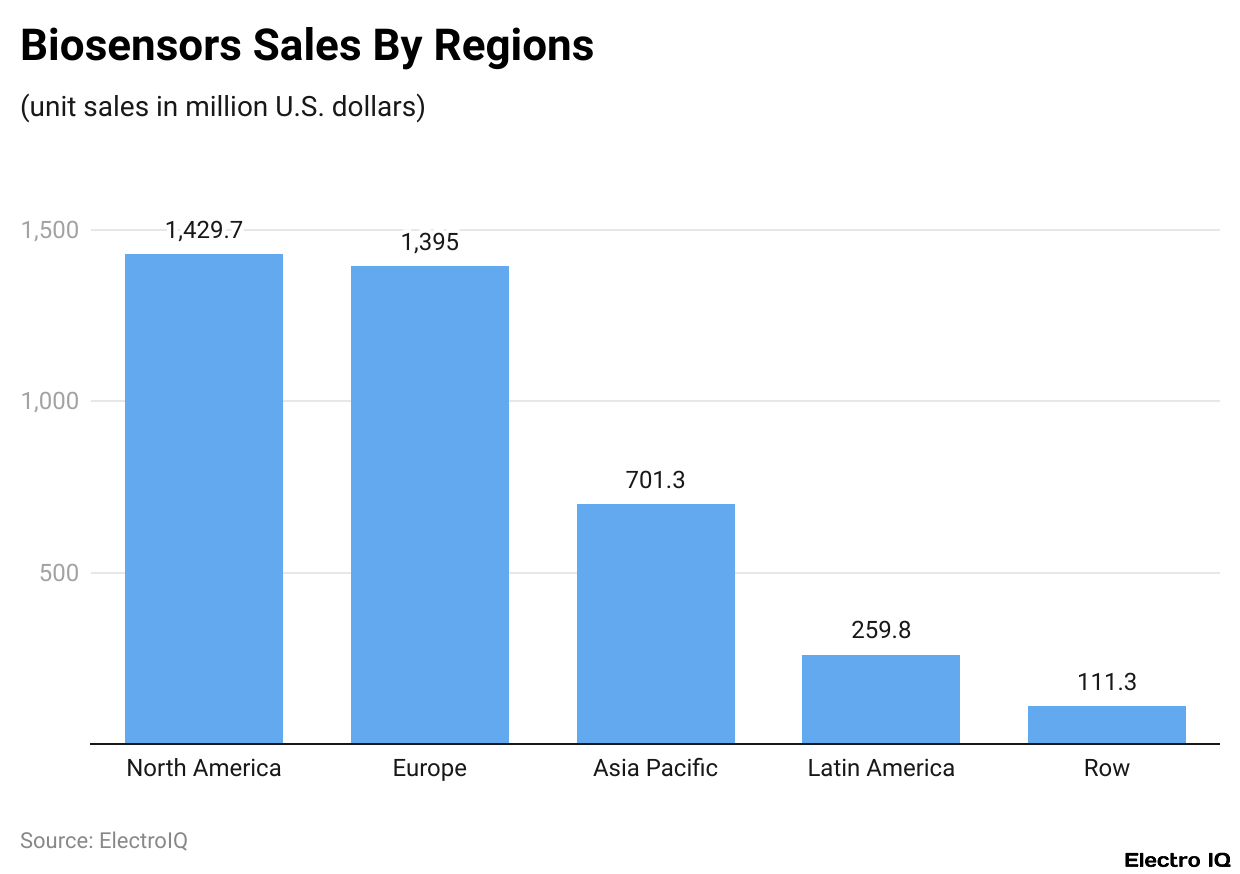
(Reference: researchgate.net)
- Biosensor statistics reveal that these units were assessed on millions of dollars across various regions around the world in sales. North America is currently positioned at the top as over USD 1.43 billion is recorded on websites selling biosensors. Europe has biosensor sales of about USD 1.4 billion.
- These two markets significantly account for the total world global sales of biosensors, depicting high demand for such devices regarding health care as well as industrial applications within these particular regions.
- Asia Pacific comes places third where biosensor revenues attain approximately USD 701.3 million, driven largely by a robust healthcare infrastructure and the technological advancement of countries such as China and India.
- Despite being less than North America and Europe, the market in Asia Pacific is fast developing mainly because of the increased concentration on healthcare and medical research in the region.
- Latin America follows with USD 259.8 million in biosensor sales. Most parts of this region are experiencing more sales in countries that are developing their healthcare systems, yet they do not come close to the larger markets.
- The Rest of the World (RoW), which refers to the areas outside these major markets and has a smaller share of the biosensor market, has sales of only USD 111.3 million.
- However, this region still shows potential for future growth as developing economies increase their healthcare and environmental monitoring needs.
Biosensor Revenue By End-use
- Biosensors statistics presented depict global biosensors market revenue by end-use sector in millions of dollars from 2020 to 2023 and exhibit growth in various sectors that have primarily utilised biosensor technology over four years.
- The home healthcare diagnostics sector showed increasing market revenue each year, moving from USD 4.48 billion in 2020 to USD 5.70 billion in 2023.
- With the increased rise in demand for home-based health-monitoring devices, particularly where chronic disease management has grown in awareness and a general shift towards more personalised care, growth is predicted.
- The point-of-care (PoC) testing sector, which is medical testing at or near the site of patient care, achieved rapid revenue growth in the years, going from USD 10.44 billion in 2020 to USD 13.37 billion in 2023.
- This sector was driven by the demand for rapid, on-site testing, especially in emergencies, and a rise in conditions such as diabetes and heart disease that require continuous monitoring.
- A similar upward trend in the food industry revenues is evident, beginning with USD 1.68 billion in 2020 and reaching USD 2.17 billion in 2023. This application of biosensors is predominantly for safety assurance, quality control, and contamination detection, which are becoming critical fields as global food supply chains are becoming more and more complex.
- The research laboratories generated a steady increase from USD 2.72 billion in 2020 to USD 3.41 billion in 2023. Growth in this area reflects the increasing application of biosensors for biological and chemical analysis in scientific research, thereby impacting the train of thought in biotechnology and pharmaceuticals.
- Finally, the security and biodefense sector, dealing with biosensors for biological threat detection and security, also recorded constant revenue growth from USD 3.09 billion in 2020 to USD 3.80 billion in 2023. This increase in the market is perhaps due to heightened global awareness towards biosecurity threats and the need for superior technologies to ensure security.
Conclusion
As per Biosensors statistics, The biosensors market has been growing rapidly across different sectors as a result of technological innovations, increasing demand for healthcare monitoring, and the higher prevalence of chronic diseases worldwide. It was estimated that the market would see continuous growth until 2033, and so much larger expansion would come across key segments like medical diagnostics, point-of-care testing, and environmental monitoring.
Next-generation biosensor technology innovations, including improvements in sensitivity and miniaturisation, are still set to play a key role in transforming the future of health, agriculture, and industrial applications.
FAQ.
The biosensor market is expected to grow at a compound annual growth rate (CAGR) of about 9.4%, resulting in its estimated value of US$1.4 Billion by 2027.
North America and Europe are the markets for biosensors. North America is estimated to reach US$11.25 billion in 2023, and this value is expected to exceed US$18.73 billion in 2030. In the same time span, Europe will follow with a CAGR of 7.7%, while the Asia Pacific market is estimated to grow significantly and reach US$10.06 billion by 2030.
Electrochemical biosensors will continue to lead revenue growth due to their increasing value, accounting for an increase from US$15.83 billion in 2020 to US$19.98 billion in 2023. Other technologies, like thermal biosensors, piezoelectric biosensors, and optical biosensors, have recorded stable revenue increases.
Medical sector revenues will reach US$14.63 billion in 2020 and US$18.68 billion in 2023. Other sectors that will grow include food safety, agriculture, and environmental monitoring.
Built around increasing chronic diseases such as diabetes and various heart ailments, an increasing number of technologies in biosensing such as devices for point-of-care diagnostics, wearable health-monitoring devices, and at-home diagnostics, miniaturisation and improved sensitivity are some of the principal drivers that fuel maximum demand for biosensors.

Joseph D'Souza founded ElectroIQ in 2010 as a personal project to share his insights and experiences with tech gadgets. Over time, it has grown into a well-regarded tech blog, known for its in-depth technology trends, smartphone reviews and app-related statistics.









